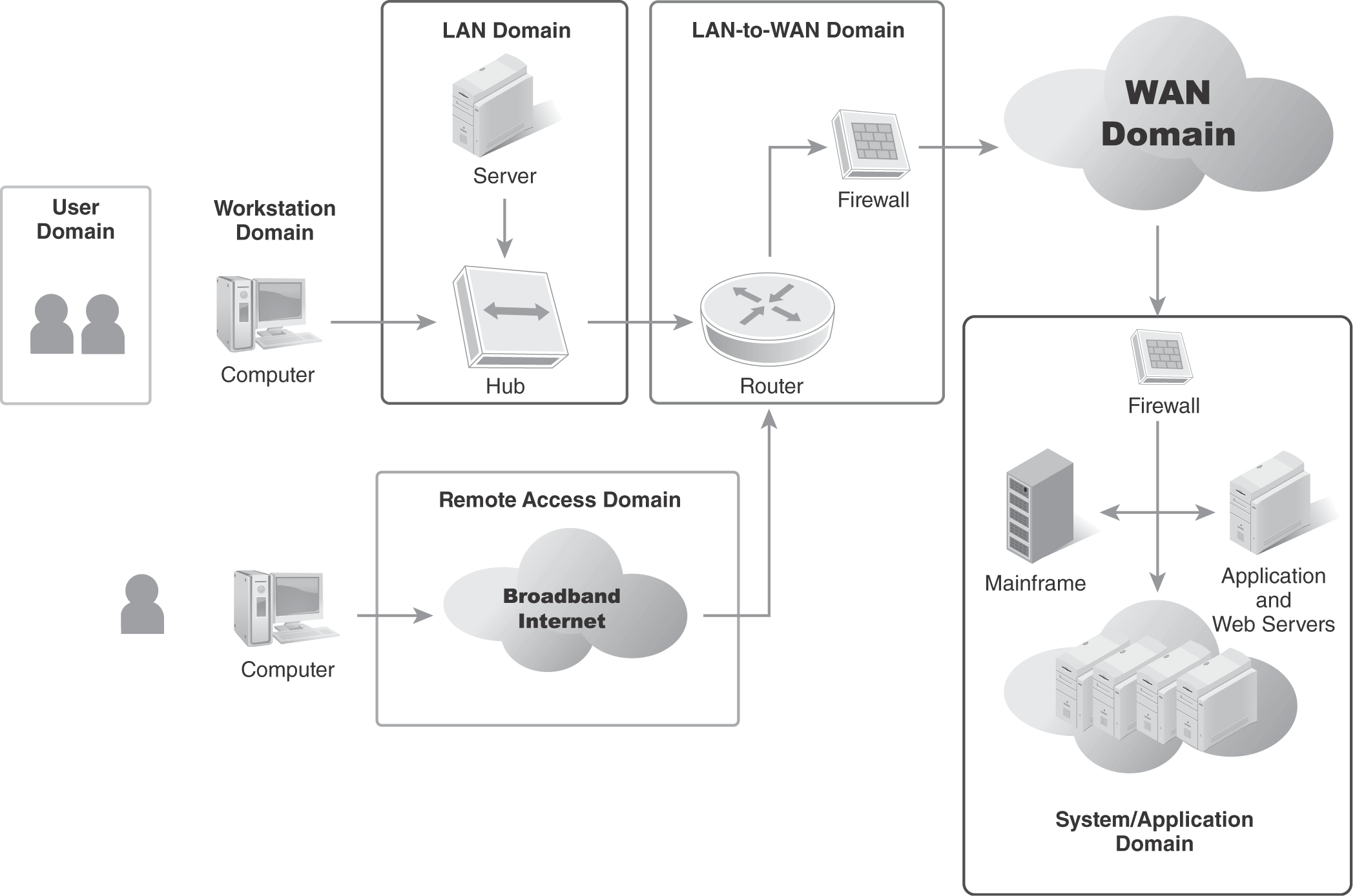Network Security Scope
Let’s examine what a typical IT infrastructure looks like. The seven domains of a typical IT infrastructure, depicted in FIGURE 14-5, are common for small office/home office (SOHO), small and medium-sized business (SMB), and enterprise organizations. It doesn’t matter how small or large, IT infrastructures all have these common elements. Here is a quick definition of each of the domains:

FIGURE 14-5 Seven domains of a typical IT infrastructure.
- User—Includes humans, which are the weakest link in the entire security chain.
- Workstation—The point of entry for the user into the network and IT infrastructure.
- LAN—The ...
Get Fundamentals of Communications and Networking, 3rd Edition now with the O’Reilly learning platform.
O’Reilly members experience books, live events, courses curated by job role, and more from O’Reilly and nearly 200 top publishers.

